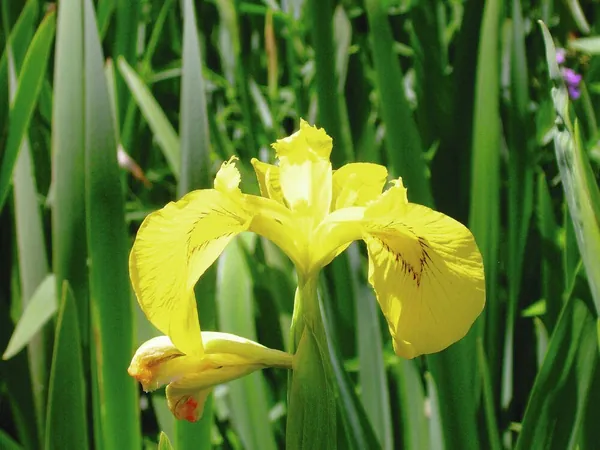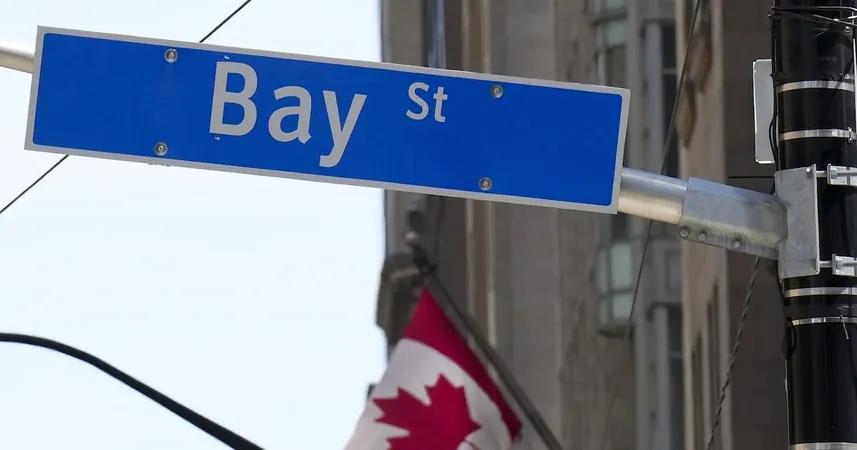
Invasive Plant Species: The Hidden Threats to Your Garden and the Environment!
2024-10-14
Author: Sophie
Invasive Plant Species: The Hidden Threats to Your Garden and the Environment!
When you admire the verdant beauty of English Ivy clinging to the walls of historic buildings, it’s easy to overlook the danger it poses to local ecosystems. Classified as an invasive species, English Ivy is one of many foreign plants that threaten the delicate balance of native flora in British Columbia. Its proliferation signifies a larger issue—an ecological crisis that threatens the very landscapes we cherish.
According to Hunter Jarratt, a restoration consultant at KiKi Nursery on Vancouver Island, invasive species are fundamentally altering the region's ecology. "The urbanization and development we’ve seen over the years have drastically transformed the native environments that once thrived here," Jarratt explains. The interplay between native plants and their ecosystems has evolved through centuries, leading to a delicate balance that invasive plants easily disrupt.
Invasive species are bold competitors. They often out-compete native plants for vital resources such as water, nutrients, and sunlight, leading to a dramatic decline in biodiversity. With the ever-looming specter of climate change, Jarratt notes that time is of the essence. “If we don’t act now, we risk a world with significantly fewer species," he warns.
Jarratt highlights the impact of invasive plants on species that depend entirely on specific native plants for their survival. For instance, certain bees are reliant on particular flowers to complete their life cycles. The Andrena astragali, known as the death camas miner bee, thrives only in environments where death camas flourishes. As invasive species spread, the consequences ripple through the food web, affecting everything from bees to birds and altering entire ecosystems.
Notorious Invasive Plant Species on Vancouver Island
Let’s take a closer look at some of the most notorious invasive plant species plaguing Vancouver Island:
1. **Himalayan Blackberry**: Though its plump berries beckon for tasting, this invasive species aggressively outgrows native blackberry varieties and poses a serious threat to local vegetation.
2. **Yellow Flag Iris**: Originating from Europe, this plant spreads rapidly along wetland edges, disrupting the ecological balance and overwhelming native aquatic species.
3. **Scotch Broom**: Brought over from Europe, Scotch broom produces thousands of seeds that can linger in the soil for decades, making eradication nearly impossible without concerted community efforts.
4. **Giant Hogweed**: This towering plant isn’t just invasive; it’s dangerous. Capable of reaching heights of five meters, contact with its sap can cause severe burns and long-term skin issues. Its range is expanding, presenting a growing risk to public safety.
5. **Canada Thistle**: Despite its name, this thistle is not native to Canada and represents a challenge due to its rapid spread and thorny structure, which can deter local wildlife.
The Coastal Invasive Species Committee (CISC) has undertaken the daunting task of educating residents about the threat of invasive species. They emphasize that awareness is critical. By familiarizing ourselves with these plants, communities can take proactive steps to reduce their impact.
For concerned gardeners and homeowners, the first step is understanding one’s local invasive species. The CISC website provides valuable resources and identifies priority invaders specific to different regions. Reporting sightings can also aid in the swift removal of invasive species. Moreover, a leaning towards planting native flora can provide a refuge for dwindling native species and reduce habitat for invasive ones.
While some non-native plants are benign or even beneficial, invasive species can wreak havoc in our gardens and ecosystems. It’s crucial to approach garden planning with an ecological mindset—planting native species not only beautifies your space but also helps preserve local biodiversity.
Plant alternatives like salal, deer fern, and even certain ornamental species can enhance your garden's diversity while keeping invasive plants at bay. Furthermore, fostering ecosystems around Garry oaks, unique to coastal regions and vital for supporting various wildlife species, can create vibrant, diverse habitats in your own backyard.
Ultimately, the fight against invasive species is a community effort. Together, we can restore the natural balance in our landscapes and protect the native species that share our environment. Knowledge, awareness, and action will ensure the beauty of our gardens does not come at the expense of our planet’s health.
Discover more about protecting our ecosystems and how you can help by exploring resources provided by local environmental organizations, such as the Coastal Invasive Species Committee and the Invasive Species Council of British Columbia. Let’s work together to stop the invasion!









 Brasil (PT)
Brasil (PT)
 Canada (EN)
Canada (EN)
 Chile (ES)
Chile (ES)
 España (ES)
España (ES)
 France (FR)
France (FR)
 Hong Kong (EN)
Hong Kong (EN)
 Italia (IT)
Italia (IT)
 日本 (JA)
日本 (JA)
 Magyarország (HU)
Magyarország (HU)
 Norge (NO)
Norge (NO)
 Polska (PL)
Polska (PL)
 Schweiz (DE)
Schweiz (DE)
 Singapore (EN)
Singapore (EN)
 Sverige (SV)
Sverige (SV)
 Suomi (FI)
Suomi (FI)
 Türkiye (TR)
Türkiye (TR)